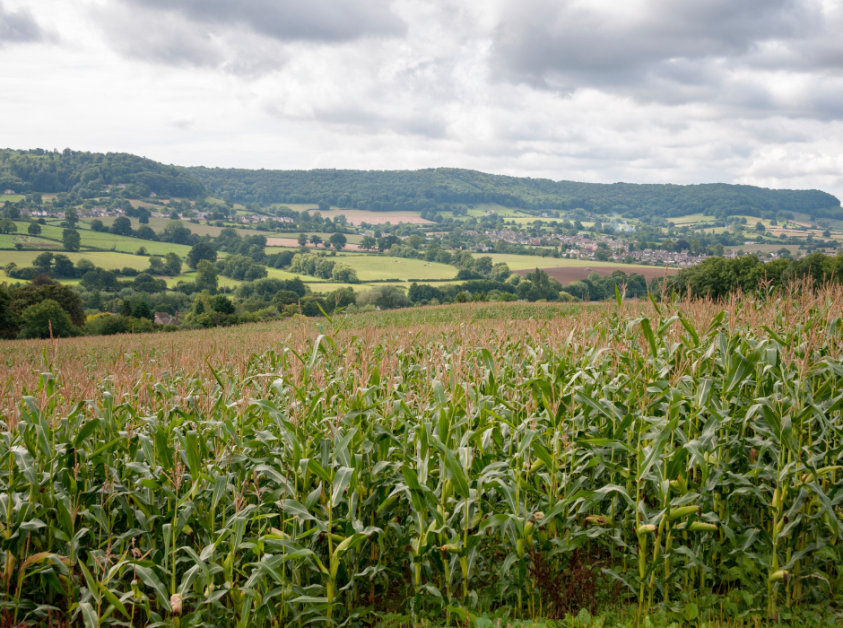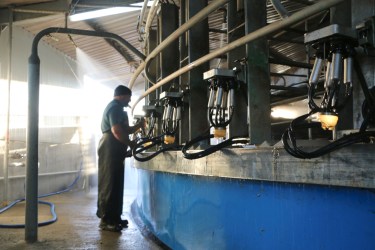There is extreme variation in the growth and maturity of maize crops this year which could result in less yield and lower quality. Some swift action and a willingness to change track will ensure your maize crop will still be of value and you will have enough feed for the winter.
Drought and heat has accelerated crop development and is bringing forward harvest dates. In extreme conditions some crops have died. In spite of this the crop can still contribute to those all-important winter feed stocks, albeit with a few changes to your typical maize harvest.
Problems … and how to tackle them
Dead plant with cobs (already the case across Dorset). If the plant has turned brown it will not grow any more, even with plenty of rain.
Solution: Harvest the crop now, to make full use of the starch that has formed in the cobs. This will make for a dry silage, so consider reducing the chopping length (to 1.5-2cm) to aid consolidation in the clamp. Fermentation will need a helping hand, so be sure to use an additive designed for high dry matter.
Short plants (under 4ft) with no cobs. These will never make headway now, unfortunately.
Solution: Harvest whilst green to allow for the sugars to ferment, and clamp separately. It will be more digestible in its current state, rather than being left to become more fibrous. Utilise this type of maize silage for any stock with lower nutritional requirements; it will be perfect for dry cows or pregnant heifers, for example.
Top tips
Ensure best practice when clamping and ensiling – every little helps when the crop has a lower than expected yield. The number one priority when ensiling dry maize crops is to achieve a high level of consolidation. You cannot apply too much weight when clamping. Please check out our blog on clamping silage. Pile up the pressure to cut silage losses
All maize silage must be analysed, and it is almost certain to have lower nutritional value where the crop suffered due to drought and required an early harvest. The analysis will help you to formulate accurate rations.
Next steps
The first job is to assess the total amount of forage in store and in the field. If stocks are inadequate, consider planting a catch crop to add to your feed supply. Putting your maize worries aside and actively planning for the window of opportunity that an early harvest presents is the best course of action here.
With current soil temperatures and some welcome rain, conditions are ideal for fast establishment of winter food stocks. These crops also lock in nutrients from a bare fallow which would otherwise be lost. Soil covered with a growing crop will build organic matter, reduce soil erosion, maintain moisture retention and supress weeds.
Stubble turnips and forage rape are perfect for well drained soils. They are particularly suitable for youngstock and low yielding cows, they are quick to establish and will give you a high yielding, protein rich crop.
Italian ryegrass is another option. It will give a decent silage crop from a reseed in just 6 weeks and give an early crop the following spring for grazing or early silage. It will give decent silage cut at the end of October with warm soils, if you get a wiggle on!
Forage Rye could also be an option, as it will grow early in spring for you, allowing for an early cut or graze ahead of the next maize crop.
Promar consultants can offer expert help and advice when it comes to analysing your silage and formulating feed rations. We can also advise on the best crop type and agronomy needed to fill in your winter feed gap. Please reach out to us if you would like a quick no obligation discussion on how we can help solve the challenge of insufficient or poor quality feed stocks. Contact Us







